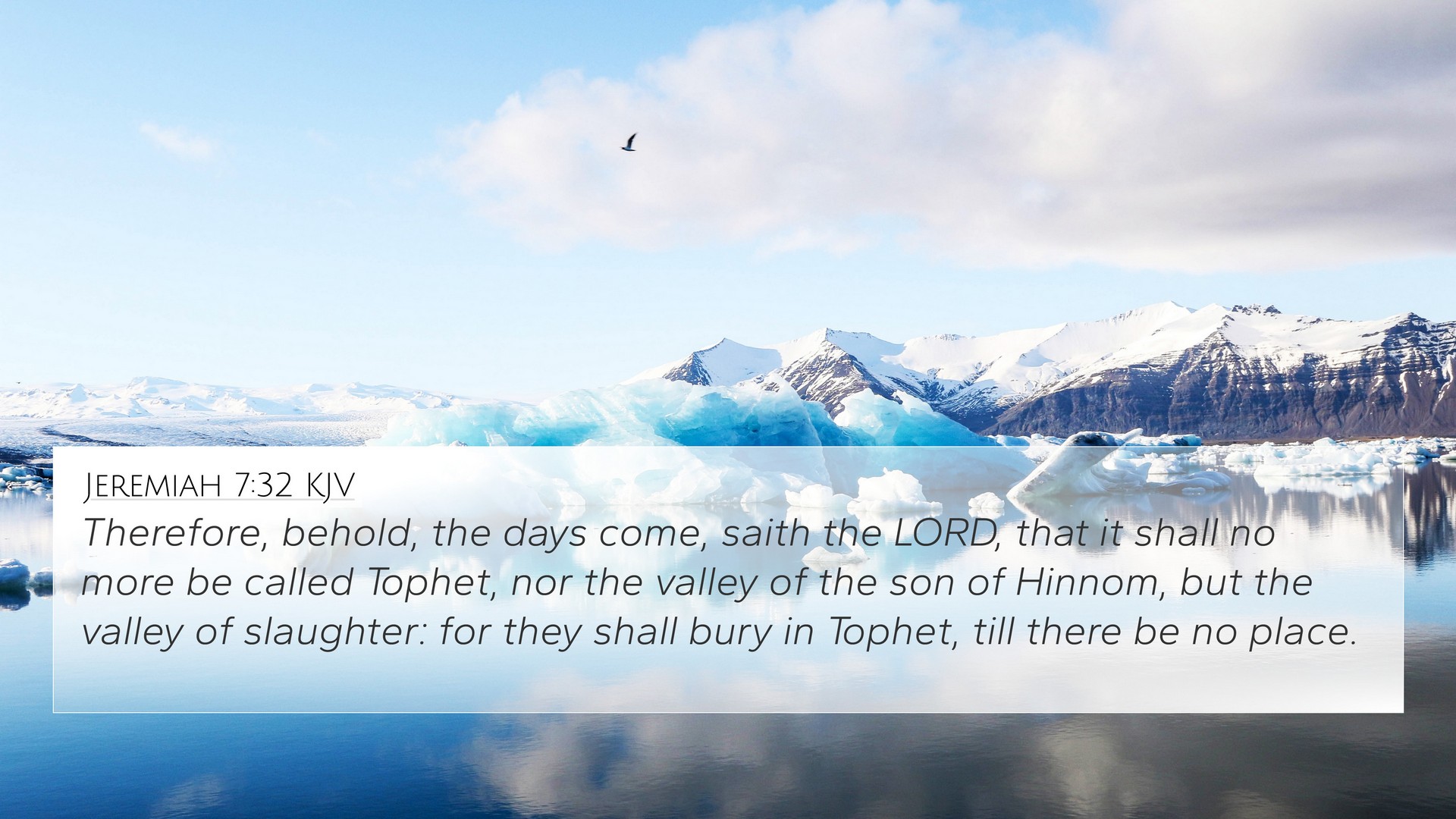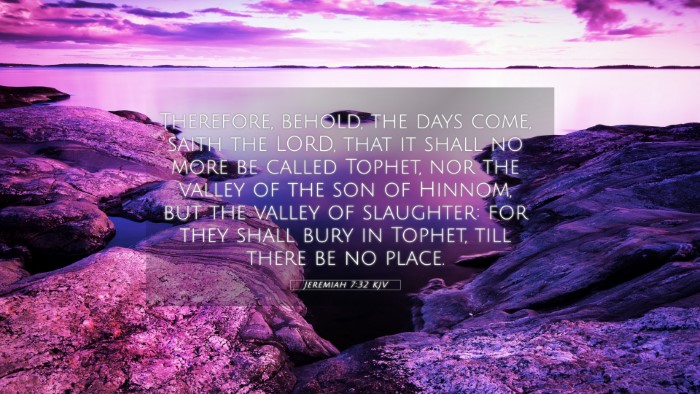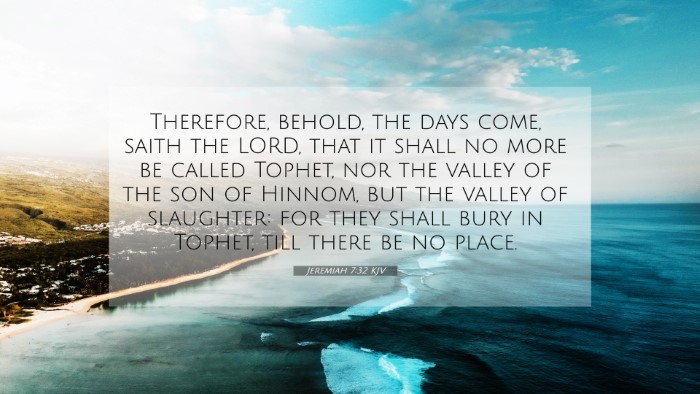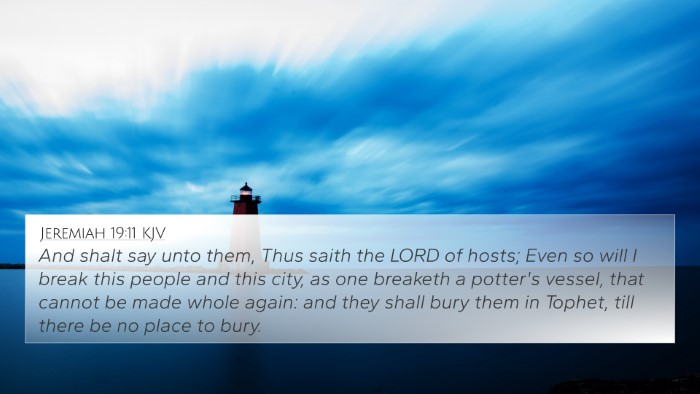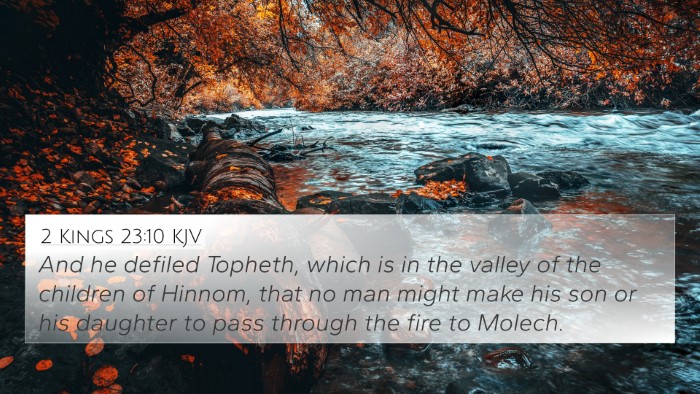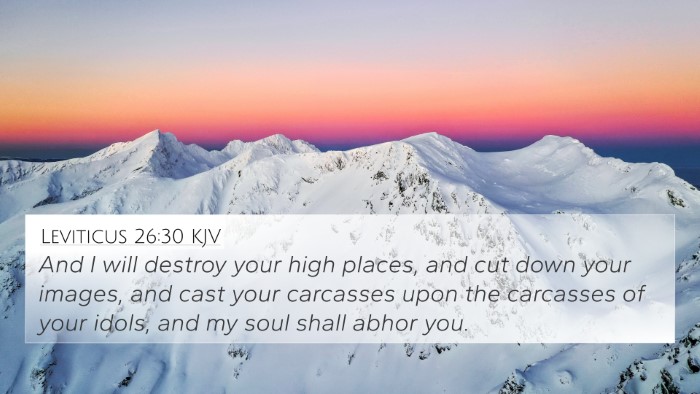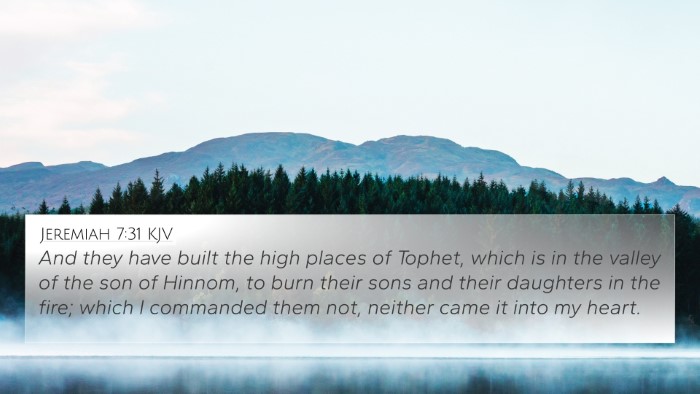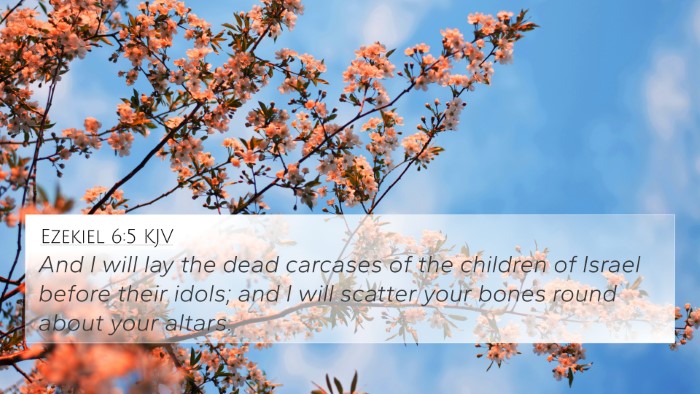Understanding Jeremiah 7:32
Jeremiah 7:32 states: "Therefore, behold, the days come, saith the Lord, that it shall no more be called Tophet, nor The valley of the son of Hinnom, but The valley of slaughter; for they shall bury in Tophet, till there be no place." This verse serves as a profound declaration of God's impending judgment upon Jerusalem and its people for their unfaithfulness and idolatry.
Summary of Insights from Public Domain Commentaries
Different commentaries provide diverse interpretations that highlight the depth of this passage. Below is a summary derived from Matthew Henry, Albert Barnes, and Adam Clarke, synthesizing their perspectives.
-
Matthew Henry's Commentary:
Henry emphasizes the transformation of Tophet, a place associated with the Baal worship and child sacrifices, into a site of death and burial due to the coming destruction. He interprets this as a vivid warning of God's judgment, reflecting the seriousness of idolatry and moral decay within the society of Judah.
-
Albert Barnes' Notes:
Barnes elaborates on the location of Tophet, explaining that it was a valley where children were sacrificed to Molech. He points out that the renaming of this valley signifies the total devastation that will follow the refusal of the people to turn from their evil ways. It underscores God's seriousness about sin and His intentions to restore holiness in Israel.
-
Adam Clarke's Commentary:
Clarke relates the verse to the broader themes of divine retribution, describing how the destruction of Jerusalem will lead to mass deaths, making burial necessary in what was once a place of idolatrous worship. He stresses the importance of repentance and warns of the consequences of perpetual disobedience.
Bible Verse Cross-References
This verse connects with several key passages that highlight themes of judgment, repentance, and the consequences of sin:
- Jeremiah 19:6: "Therefore, behold, the days come, saith the Lord, that this place shall no more be called Tophet, nor The valley of the son of Hinnom, but The valley of slaughter." This verse reiterates the judgment theme and the transformation of Tophet.
- Ezekiel 39:11: This passage discusses the valley of those who fell in battle, similar to the context of judgment and destruction in Jeremiah.
- Isaiah 66:24: Reference to corpses and divine judgment aligns with Jeremiah's somber prediction.
- 2 Kings 23:10: "And he defiled Topheth, which is in the valley of the children of Hinnom, that no man might make his son or his daughter to pass through the fire to Molech." This historical context establishes the valley's significance in Israel's idolatry.
- Jeremiah 25:31: "The noise shall come even to the ends of the earth; for the Lord hath a controversy with the nations, he will plead with all flesh; he will give them that are wicked to the sword." This shows the global consequences of divine judgment.
- Hebrews 10:27: "But a certain fearful looking for of judgment and fiery indignation, which shall devour the adversaries." This reflects the consequences of sin mirrored in Jeremiah’s message.
- Revelation 21:8: "But the fearful, and unbelieving, and the abominable, and murderers, and whoremongers, and sorcerers, and idolaters, and all liars, shall have their part in the lake which burneth with fire and brimstone: which is the second death." This passage emphasizes the eternal consequences of sin akin to those warned against in Jeremiah's prophecies.
Connections Between Bible Verses
The connections and thematic links between Bible verses can greatly enhance understanding. The judgment prophesied in Jeremiah finds echoes in the teachings of other prophets and the New Testament:
- Linking Old and New Testament: The thematic elements of sin leading to judgment found in Jeremiah are prevalent throughout scripture, demonstrating God's unchanging nature regarding holiness.
- Comparative Bible Verse Analysis: A detailed analysis between Jeremiah and prophets like Ezekiel and Isaiah reveals a consistent message regarding consequences for disobedience.
- Inter-Biblical Dialogue: The dialogue among scriptural texts reveals an intricate tapestry of divine justice, mercy, and the call to repentance.
Tools for Bible Cross-Referencing
Utilizing tools for cross-referencing can enhance your Bible study experience. Here are some methods:
- Bible Concordance: This resource helps locate verses associated with specific keywords, facilitating thematic connections.
- Bible Cross-Reference Guide: A structured reference can aid in discovering related scriptures, providing a cohesive understanding of biblical themes.
- Cross-Reference Bible Study: Engaging in this method allows for an in-depth comprehension of how various scriptures interact and support each other.
- Bible Chain References: This method traces themes through a series of interconnected verses, reinforcing the scripture's unified message.
Conclusion
Jeremiah 7:32 serves as a stark reminder of the consequences of sin and the critical importance of repentance. By engaging in cross-referencing and exploring the connections between scriptures, one gains deeper insights into God’s character and His dealings with humanity. This reflective study not only enriches personal faith but also provides a more profound understanding of God's overarching narrative throughout the Bible.
